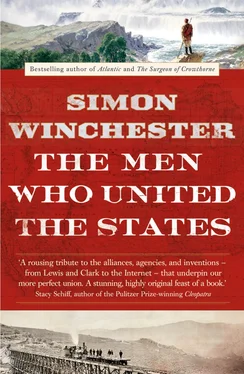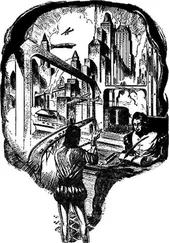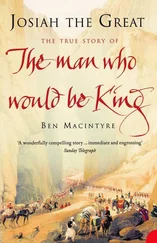The country’s mills, smelters, and forges were demanding iron and coal and copper—while wealthy city dwellers were demanding other precious metals and stones to be brought out from underground, too. Agriculture was expanding westward with the settlers: fertilizers were needed, and beds of phosphate and marl needed to be identified by a cadre of elite scientists who were now all of a sudden being seen as ever more vital to the national interest. The maps they made—not entirely comprehensible to most, true—were becoming popular items, in vogue at least among those eager to be able to forecast where needed treasures might be found.
David Dale Owen was a key player during this ebullient period in America’s expansionist history. His first duties involved helping with the geological survey of the state of Tennessee, which was begun in 1833. He was appointed assistant to a Dutchman, Gerard Troost, whom Tennessee had appointed to be its first-ever state geologist and who, as a passenger on the Boatload of Knowledge , had been a keen member of the utopian community. The men knew each other: both were legatees of Maclure’s ever-spreading influence, both were graduates of the New Harmony schools.
But there were to be many more. The United States Congress was at the time making certain that all American public land that held proven or suspected reserves of minerals—lead, iron, and coal in particular—be sold in an organized manner, without either favoritism or fraud. Owen, his skills honed in Tennessee, was next appointed an official in the General Land Office, the body that made both the rules and the sale, and in 1840 the agency demanded that he survey eleven thousand square miles of the ore-rich corners of Iowa, Wisconsin, and Illinois.
He achieved this survey with remarkable dispatch. Within two years, he had finished and had turned in to his superiors a report that encompassed “161 printed octavo pages, 25 plates and maps, including a colored geological map and several colored sections.” He had had help—no fewer than 139 assistants, every last one of them drawn from the schools in New Harmony, all of the young men trained by him and Maclure. According to an official history, Owen’s organization of the survey “was a feat of generalship which has never been equaled in American geological history … one more illustration of the energy, persistence, and virility of the Scotch emigrants and their descendants in America.” It was a testament also to the enduring role of New Harmony in the making of early America.
By the time Owen died, in 1860, at least twenty-eight states had organized well-established geological surveys. Scores of maps were being published from all sides. Moreover, geologists who had arrived by sea on the West Coast had looked carefully at California and Oregon and had declared that it was likely that great mineral wealth existed there, and that discoveries of great value, such as the one made at Sutter’s Mill in 1848, were likely to be repeated.
All of the land between the coasts was also soon about to yield to squadrons of men who were equipped just as Owen and the Eastern, Midwestern, Californian, and Oregonian explorers had been. American scientists would in short order offer up thousands of detailed and very beautiful cartographic images of how the entire country had been constructed. So the knowing of the country was now well under way, and with this knowledge came the pressing urge to settle those places now being revealed map by map, survey by survey. To settle places deemed suitable for living, for farming, for mining, or for the birth and nurturing of an unbridled frontier optimism—a territory that was fast being fashioned and united into something that for millions of settlers could soon be called a homeland.
It is surely a universal truth that men and women who choose voluntarily to pack up everything, acquire a wagon, set off down a rutted track into the sunset, and then endure weeks and months of privation, misery, and real danger in order to create new homes for themselves countless miles elsewhere must have a powerful reason for doing so. Modern America’s very existence is based on the awe-inspiring reality that thousands upon thousands made this very choice. And at first blush it appears they had just as many thousands of reasons for setting forth toward the sunset.
Nearly all were going off to the West because they imagined a better and more congenial life there. Perhaps some were afflicted by a goading restlessness, but only a few went out on a whim. Some were drawn by reasons religious, others were compelled by a need to escape—to get away from political persecution, from the hand of the law, the clutch of a pestilence, 3the misery of a failed romance, or the stench of an unsavory past. A number in America’s Eastern and Southern states found the whole business of segregation and slavery unpalatable, and imagined that out west they might encounter a more tolerant and liberal atmosphere.
But for most, the West was simply the Promised Land. “Eastward I go only by force,” said Thoreau, “but westward I go free.” And the pioneers who were bold enough to head in that direction did so, generally speaking, imbued with a spirit of ambition and adventure and an unyieldingly optimistic sense of enterprise.
And yet—what was it, more specifically than all of their stated reasons, that truly provided the lure? What intelligence was it that had produced the necessary temptation—the impetus, the final trigger, that decided a hitherto settled Easterner to obtain a wagon, to pack up all his belongings, to say farewell to scores, and then to head off for thousands of miles into the Western unknown?
The answer almost always had something to do with the land. People went in multitudes because of what they knew, what they had heard told, or what they suspected about the very earth of which the West was made.
They learned that the far reaches of the country held places that sported a variety of temptations. There might be vast acreage of thick black soils. There might be cliffs rich with exotic ores. Some might have found rivers running over gold-specked gravel beds. Wanderers might have returned with news of coal seams, tar pits, strangely glinting mineral crystals, deposits of marble, beds of rich red sandstones, or prairie tablelands and valleys covered with a wealth of grasses and flowers that, once tamed and watered, could be farmed and persuaded to yield measureless wealth. These were lands well suited to those who had the necessary ambition, vision, and endurance, for those possessed of the true grit.
It was from the 1820s onward that those in the East were first being told about the remarkable qualities of the Western lands, and were being told of them in great and fascinating detail. The information was contained in the often breathlessly excited reports of the men who had made the journey already. Some of these were American Fur Company trappers; some others were missionaries—two missionary women, Narcissa Whitman and Eliza Spalding, crossed the Continental Divide in 1836, and the husband of one came back east to tell of their adventures and to plead with others to come follow her example. Most reports, however, were sent back from soldiers or scientists accompanying those soldiers, who had been sent out officially by the United States government, charged with exploring the full extent of the trackless continent. Such men—and there were so many, a roll call risks becoming a blur—would turn out to be the vanguard of all the great migrations that followed soon after.
They were men like Edwin James, in 1820, who conducted a geological survey of the Appalachians, the Ozarks, and the foothills of the Rockies on an expedition run by a Major Long, United States Army. Or like Henry Schoolcraft, who went with one Major Cass to the headwaters of the Mississippi, also in 1820, and there found substantial deposits of copper, lead, and gypsum. In 1823 a geologist named William Keating found copper in West Virginia. In 1824 the heroic explorer, trapper, and mapmaker Jedediah Smith rediscovered the low and easy South Pass 4through the Rockies, and Benjamin Bonneville, who took a wagon train through it eight years later, wrote of his discovering the famous salt flats in Utah in 1832. Two years later still, the first-ever official United States geologist, George Featherstonhaugh, drew a remarkably accurate cross section of the country from Texas to the Atlantic Ocean, noting the presence of interesting-looking mineral deposits along the way.
Читать дальше












